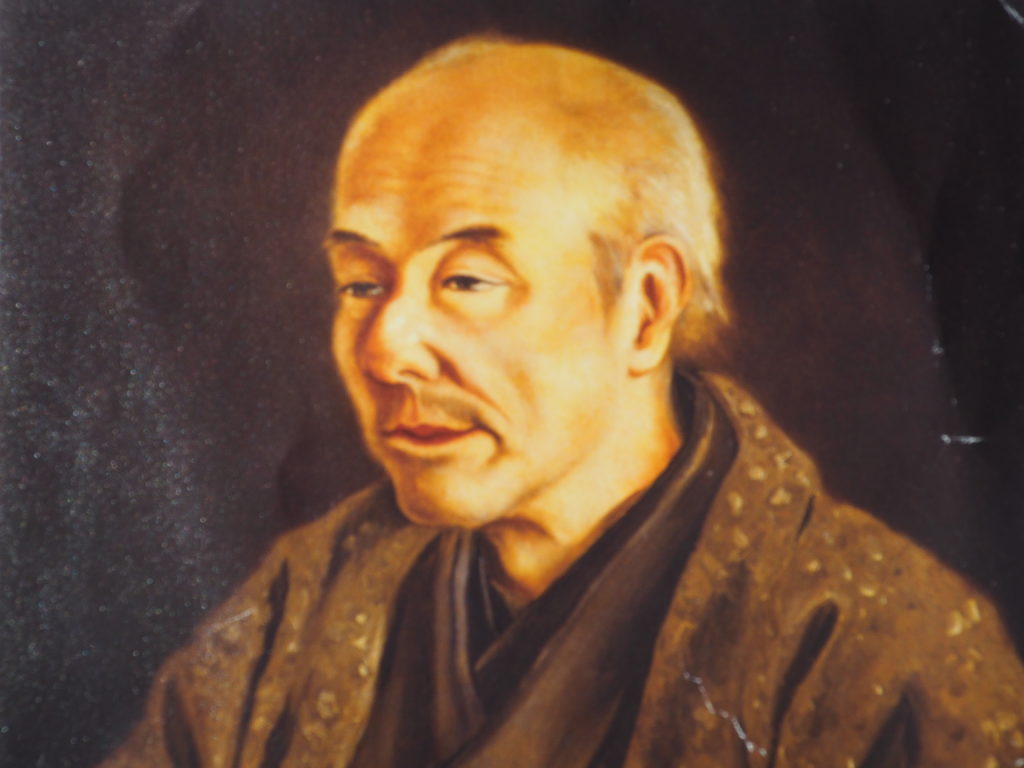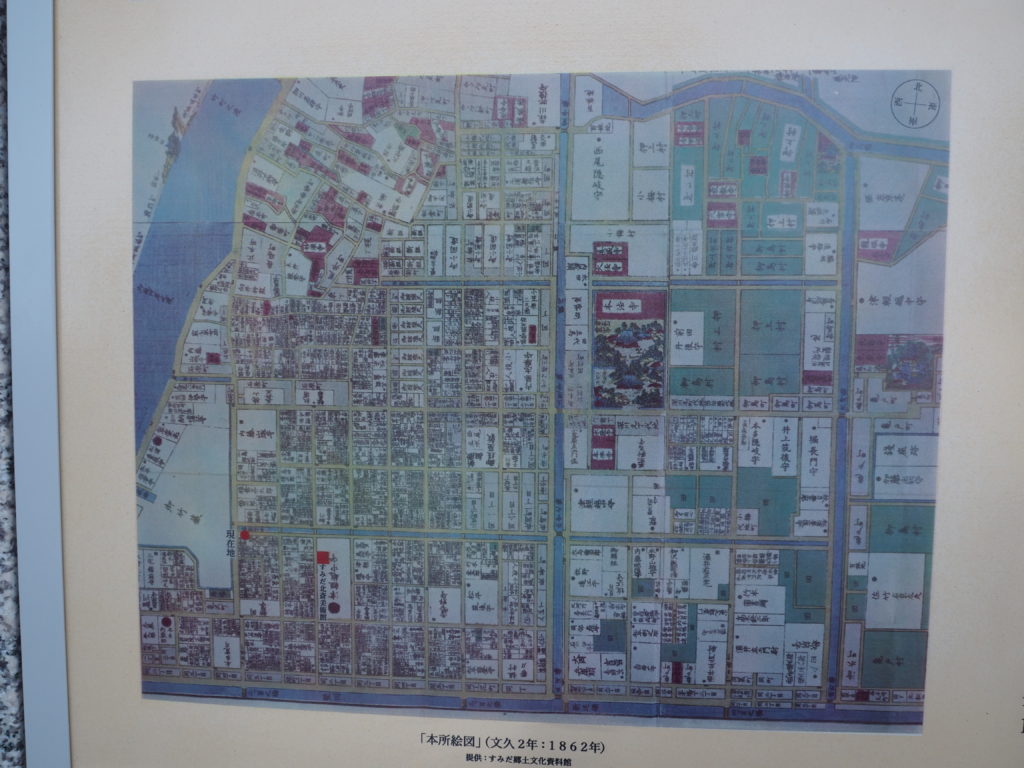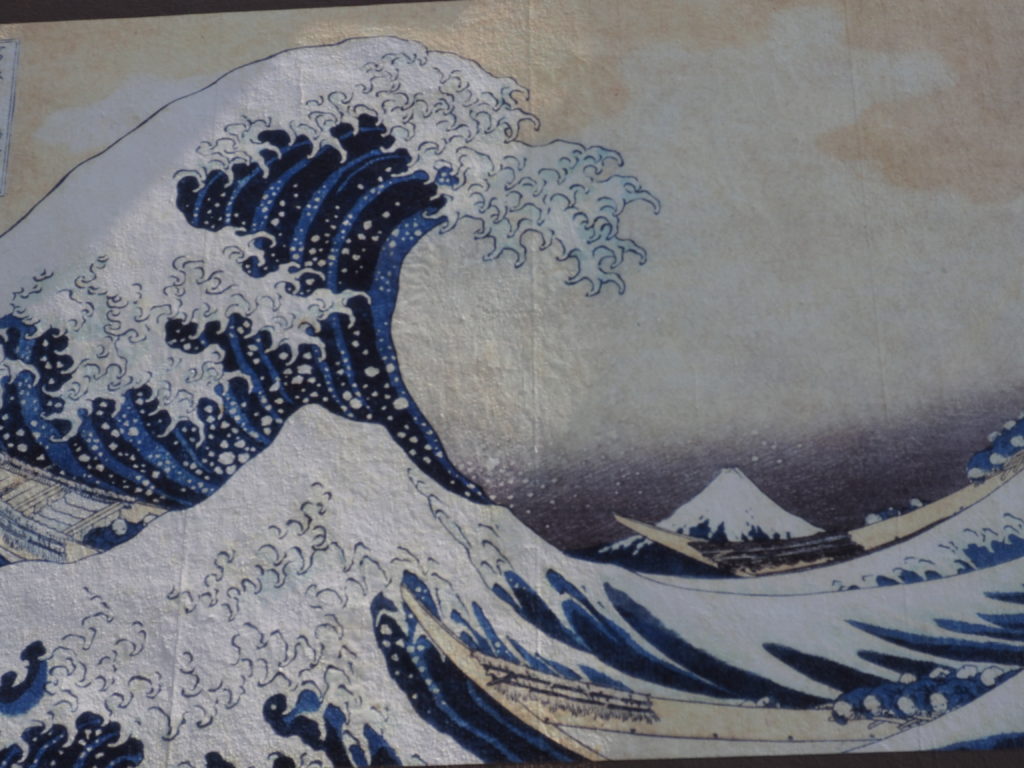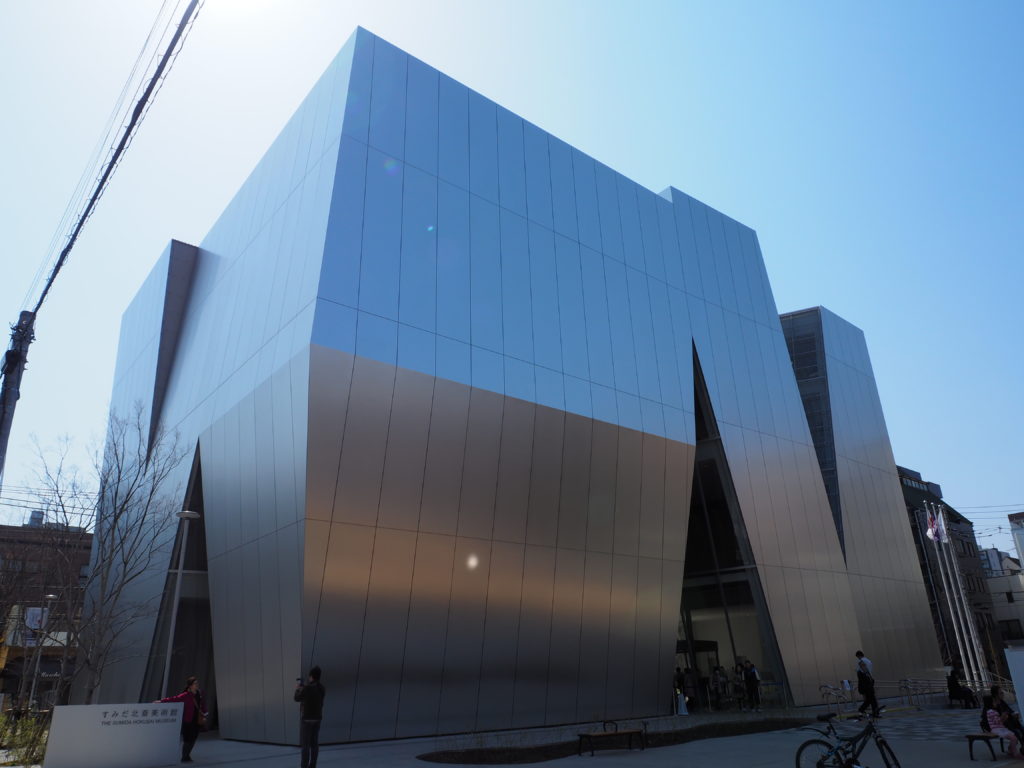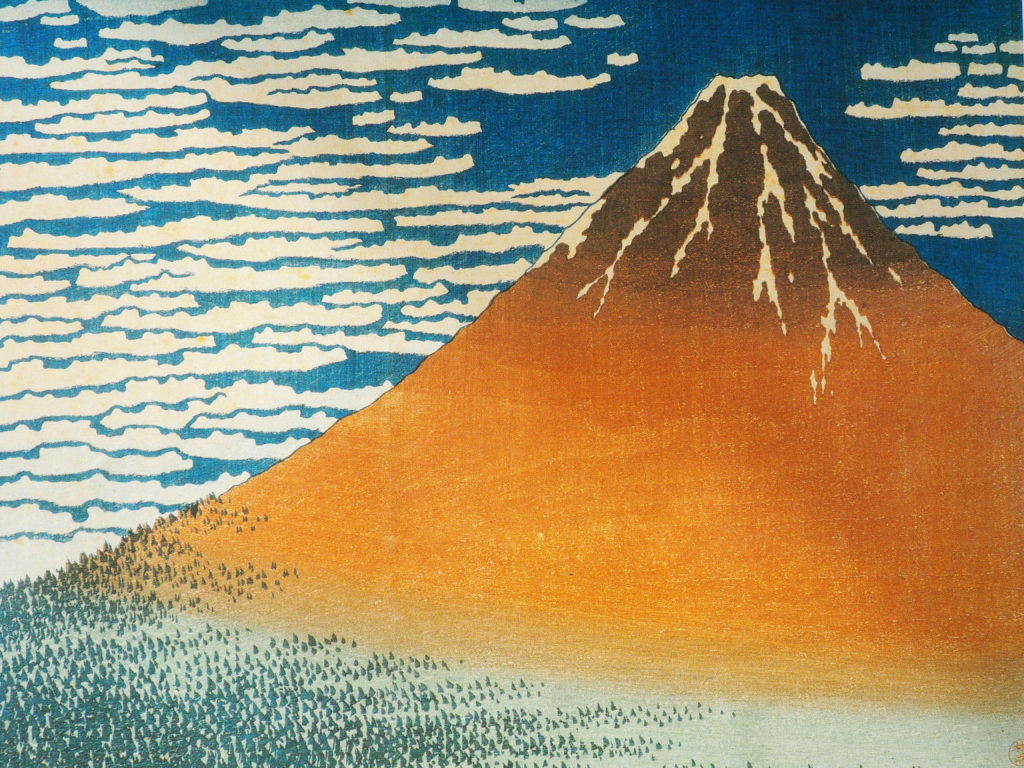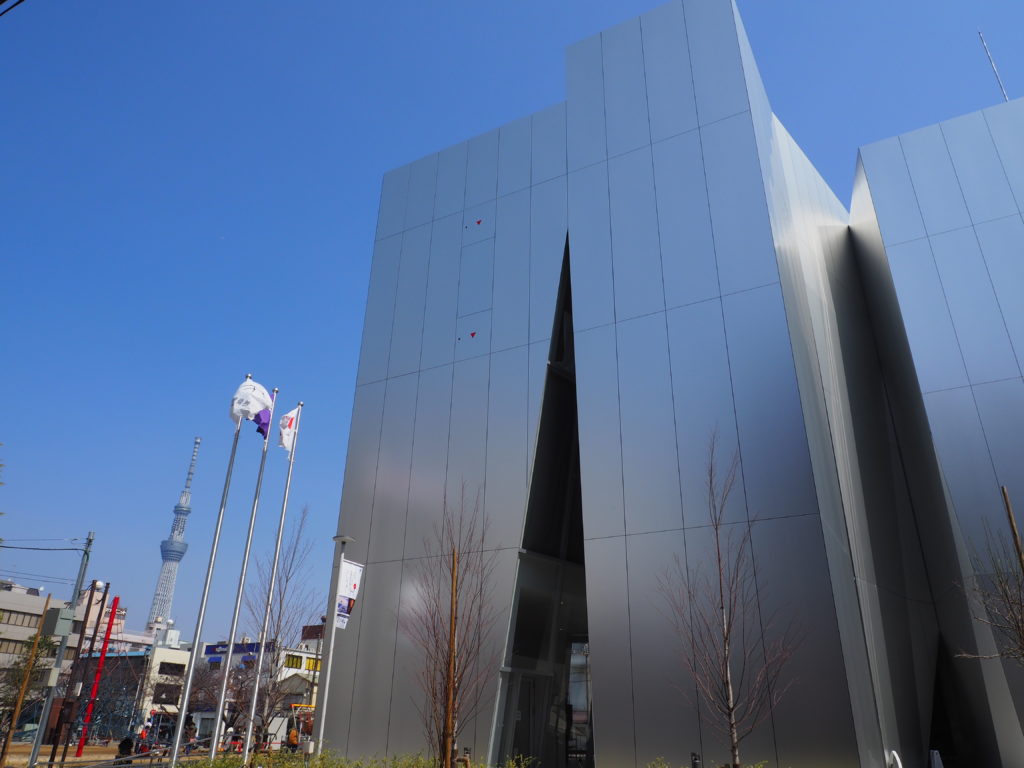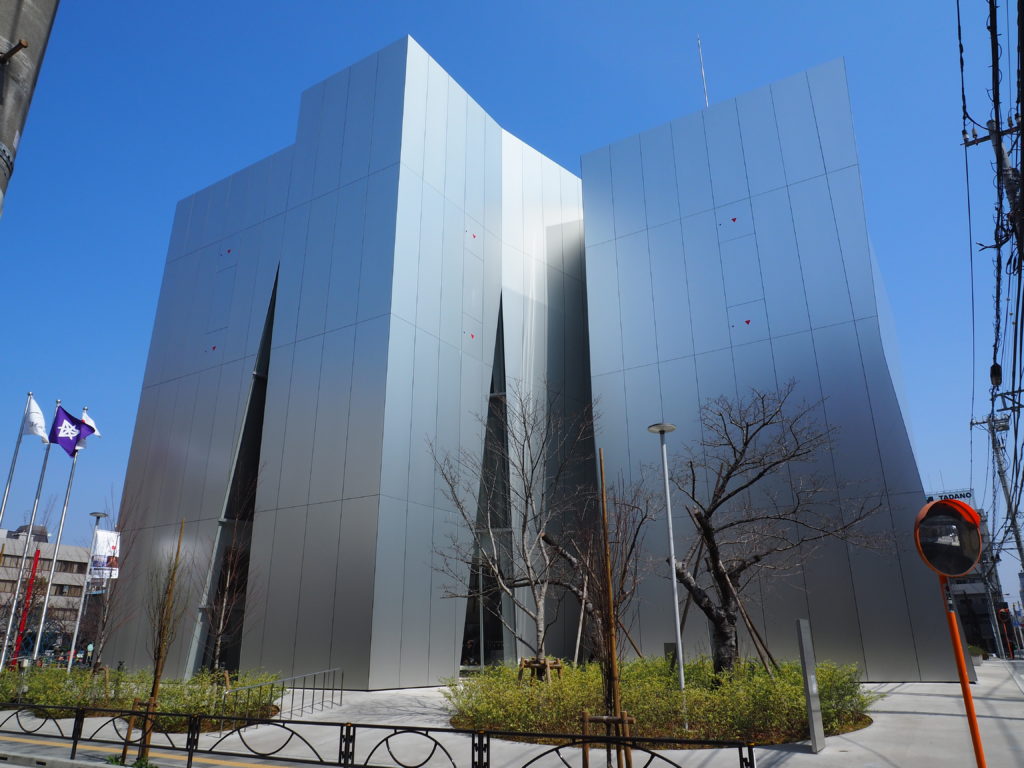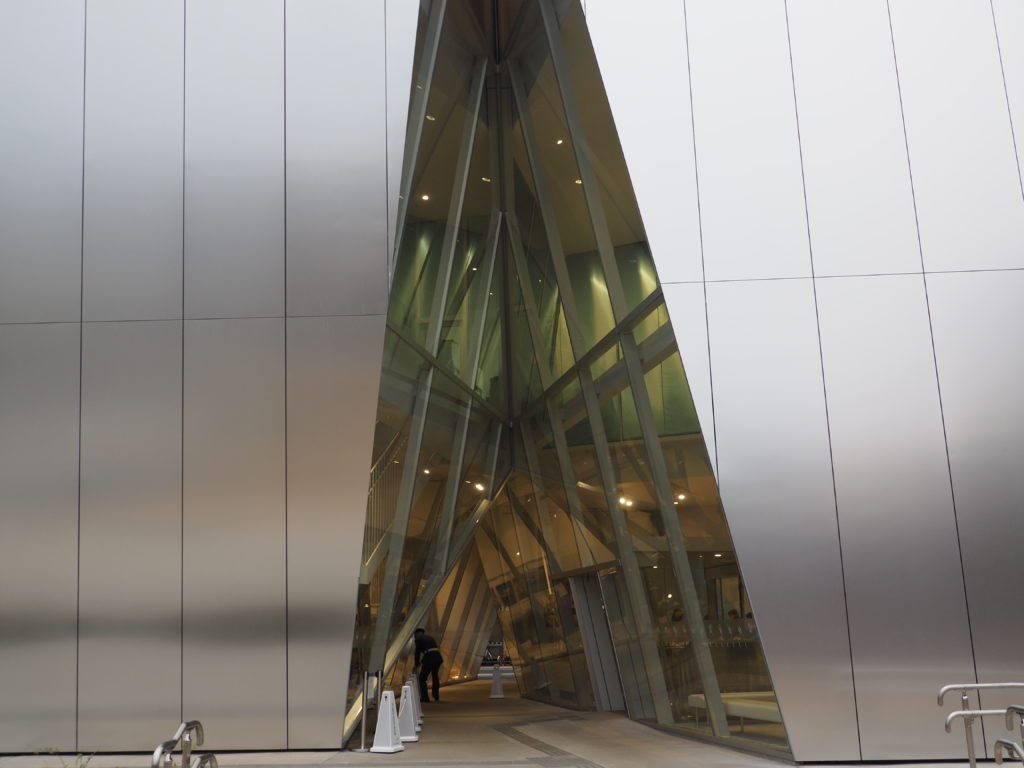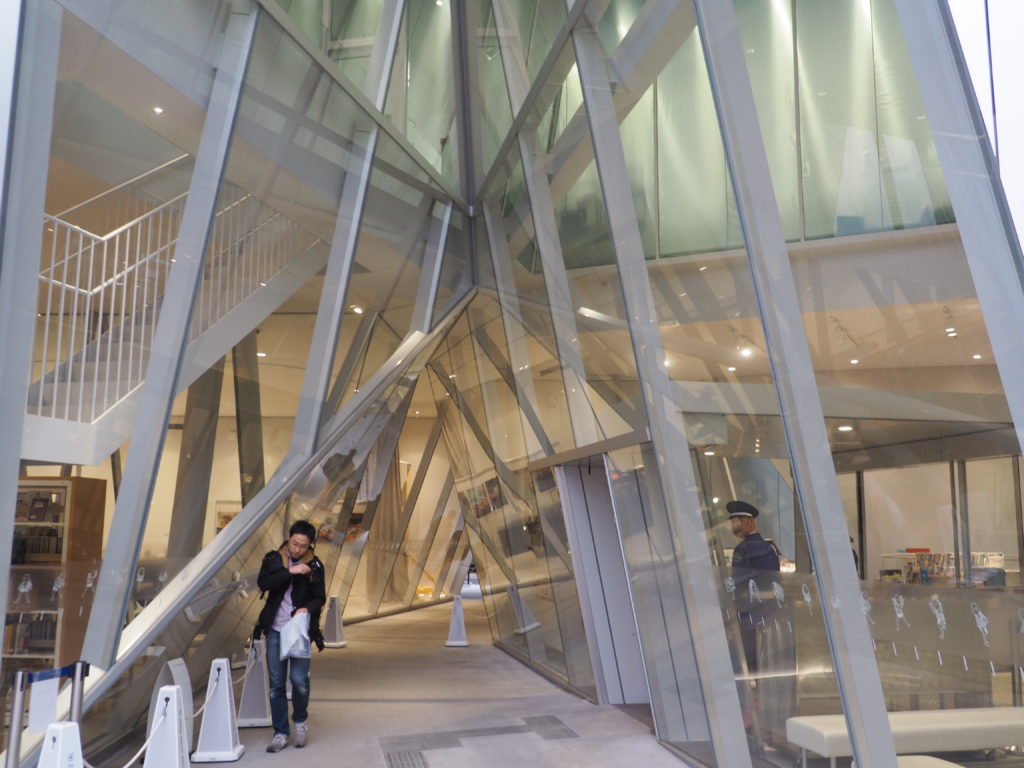KATSUTSHIKA HOKUSAI (1760-1849) undoubtedly belongs among the most acclaimed Japanese artists. Possibly he may be even the most famous Japanese artist ever. He is the most celebrated Japanese author of woodblock prints. He will always be remembered as the author of famous series Thirty-six Views of Mount Fuji – the idea of repeating the same topic from different point of view and different light comes from Hokusai. Following the opening of Japan to the West his prints were admired in Europe and had a big influence on the European painters, including Monet, Degas, Van Gogh, Gaugin, Manet, Whistler and Bonnard.
He was born in the Sumida district in Edo and he lived here most of his life, however not at the same place. He is supposed to have moved as many as 93 times during his lifetime, interesting, isn´t it? But in was not always his choice, at one time he barely saved his own life and his brushes as his house flared-up. The house burned down but his brushes were saved and he could continue painting. This is what he said himself – he saved his brushes to be able to paint. 🙂 It is also interesting that he used more than 30 names during his carreer.
His old quarter never forgot its great artist – there is a street named after him here, too – Hokusai Dori = Hokusai Street. And you come accross Katsushika Hokusai´s works almost at every step as posters with reproductions of them can be seen. I even came accross a big billboard. He is mentioned in street maps, too. And then you see the suggestive lead colour hyper modern building, new, just several month young – and it houses Katsushika Hokusai´s museum = Sumida Hokusai Museum.
Not all originals of his works are exhibited and I found it a bit disappointing because I was looking forward to enjoying seeing them all 🙂 naïve little me. It did not occur to me that not all of the collection would be exhibited. Works of art of other artists are being exhibited here, too. And I chose a bad day for a visit as it was Sunday and the museum was really crowded. Some pictures are very small and people were queuing to be able to get close to them. Well, I did too, learning patience from the patient Japanese people.
The Sumida Hokusai museum is proud of three collections: 1/ Peter Morse Collection containing appr. 600 items. Peter Morse (1935-1993) was the world´s leading collector and researcher of works by Hokusai. 2/ Narazaki Collection. Dr. Muneshige Narazaki (1904-2001) was Japan´s leading ukiyo-e researcher. 3/ Collection by Sumida City containing works mainly by Hokusai and his followers. Themes of the exhibitions in the museum will be changing and making use of different items of these collections.
